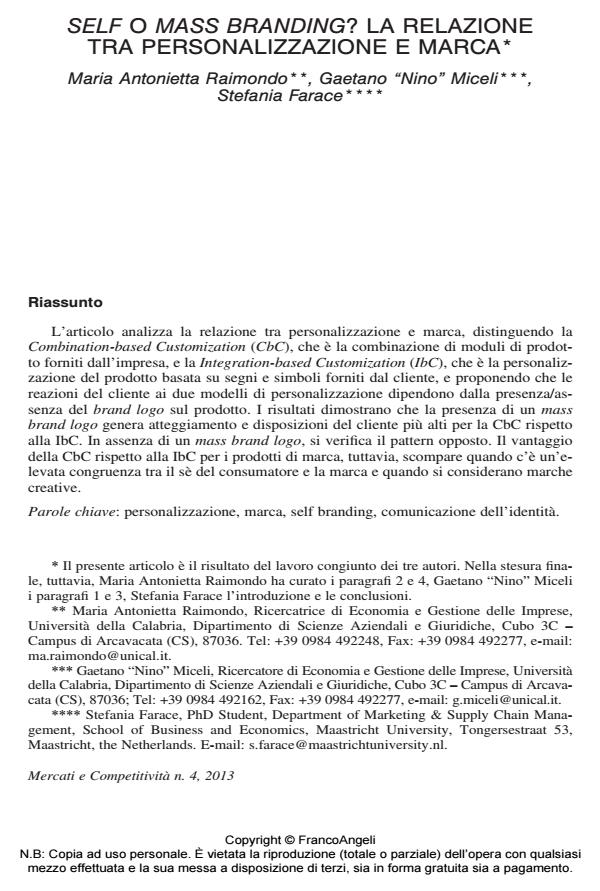Self o mass branding? La relazione tra personalizzazione e marca
Titolo Rivista MERCATI E COMPETITIVITÀ
Autori/Curatori Maria Antonietta Raimondo, Gaetano "Nino" Miceli, Stefania Farace
Anno di pubblicazione 2013 Fascicolo 2013/4
Lingua Italiano Numero pagine 23 P. 149-171 Dimensione file 751 KB
DOI 10.3280/MC2013-004008
Il DOI è il codice a barre della proprietà intellettuale: per saperne di più
clicca qui
Qui sotto puoi vedere in anteprima la prima pagina di questo articolo.
Se questo articolo ti interessa, lo puoi acquistare (e scaricare in formato pdf) seguendo le facili indicazioni per acquistare il download credit. Acquista Download Credits per scaricare questo Articolo in formato PDF

FrancoAngeli è membro della Publishers International Linking Association, Inc (PILA)associazione indipendente e non profit per facilitare (attraverso i servizi tecnologici implementati da CrossRef.org) l’accesso degli studiosi ai contenuti digitali nelle pubblicazioni professionali e scientifiche
L’articolo analizza la relazione tra personalizzazione e marca, distinguendo la Combination-based Customization (CbC), che è la combinazione di moduli di prodotto forniti dall’impresa, e la Integration-based Customization (IbC), che è la personalizzazione del prodotto basata su segni e simboli forniti dal cliente, e proponendo che le reazioni del cliente ai due modelli di personalizzazione dipendono dalla presenza/assenza del brand logo sul prodotto. I risultati dimostrano che la presenza di un mass brand logo genera atteggiamento e disposizioni del cliente più alti per la CbC rispetto alla IbC. In assenza di un mass brand logo, si verifica il pattern opposto. Il vantaggio della CbC rispetto alla IbC per i prodotti di marca, tuttavia, scompare quando c’è un’elevata congruenza tra il sè del consumatore e la marca e quando si considerano marche creative.
Parole chiave:Personalizzazione, marca, self branding, comunicazione dell’identità.
- User-Generated Systems of Signs and Meanings in Product Customization: Taxonomies and Research Directions Maria Antonietta Raimondo, Stefania Farace, Gaetano "Nino" Miceli, in MERCATI & COMPETITIVITÀ 2/2018 pp.61
DOI: 10.3280/MC2018-002004
Maria Antonietta Raimondo, Gaetano "Nino" Miceli, Stefania Farace, Self o mass branding? La relazione tra personalizzazione e marca in "MERCATI E COMPETITIVITÀ" 4/2013, pp 149-171, DOI: 10.3280/MC2013-004008